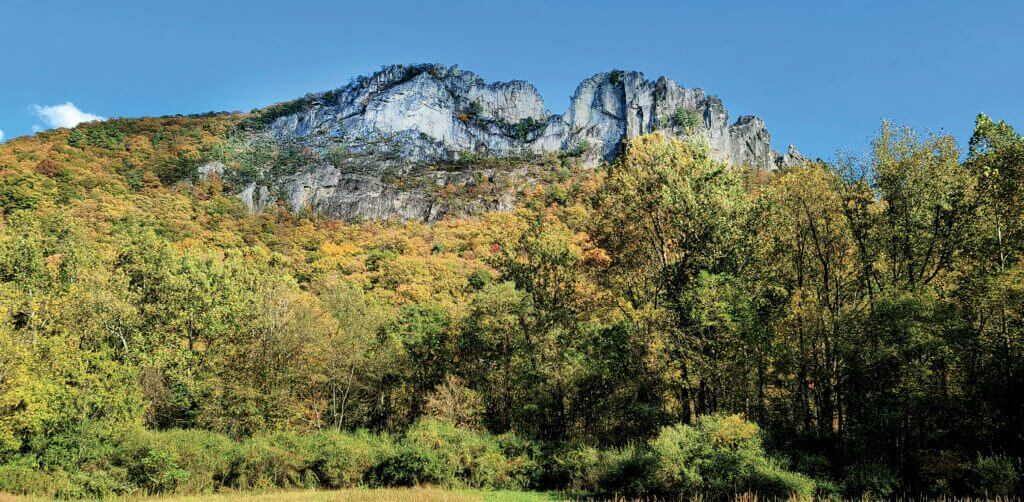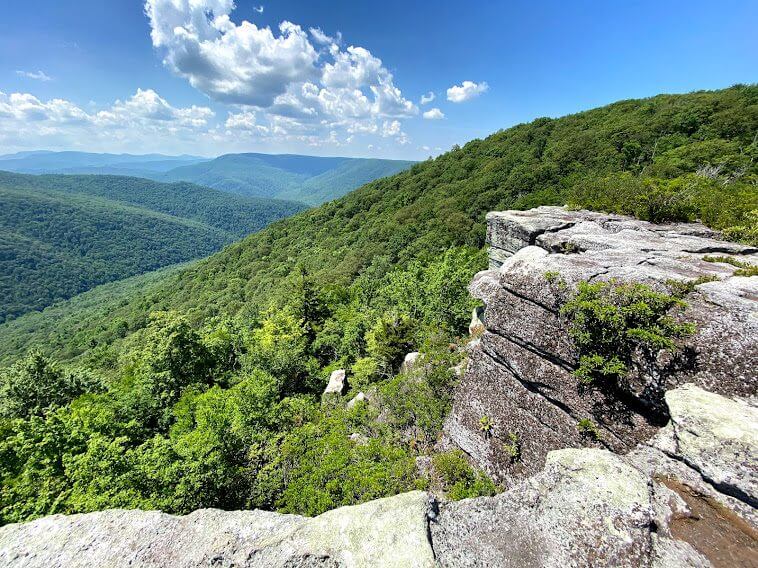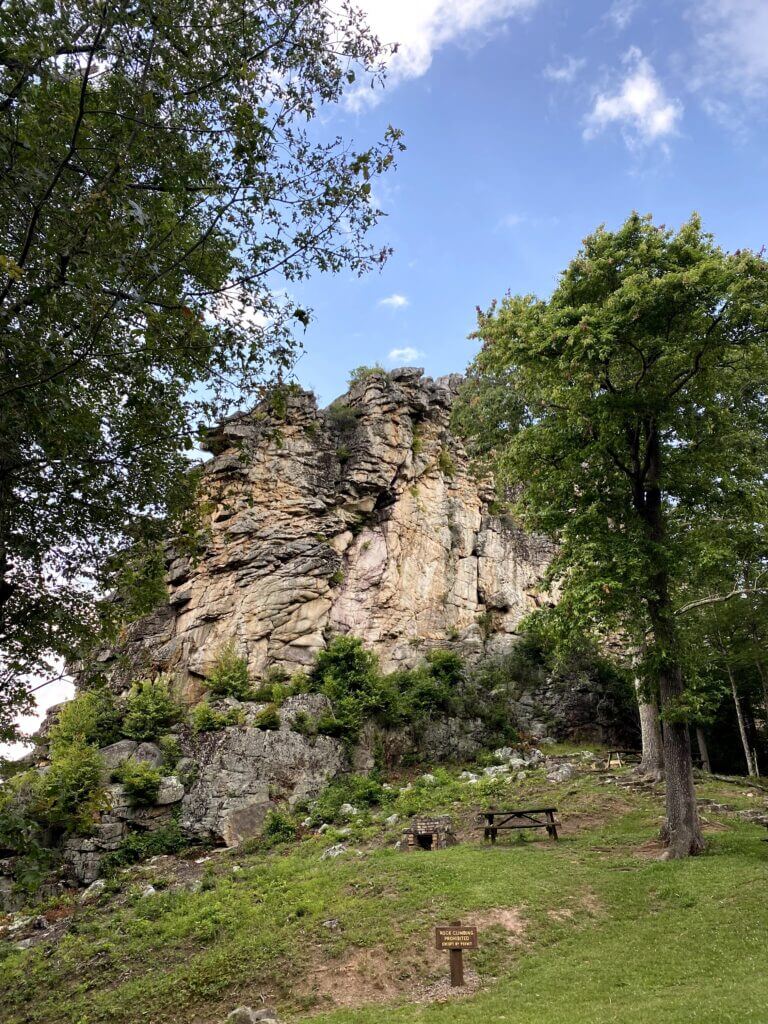Explore the geological backbone of the Mountain State, starting with a few of her most famous rocky outcroppings.

written by Jordyn Truax
Nestled deep in the heart of Appalachia, West Virginia is home to some of the most spectacular hikes in the Eastern United States. These trails range from well-travelled pilgrimages for weekend warriors to exposed goat trails not for the faint of heart. Those who venture into the woods to escape the monotony of the day-to-day are often rewarded with magnificent views of the Mountain State or glimpses of unique geological wonders. Check out five of the state’s most famous rocks formations, each of them perfect for adventurers looking to explore.
Table Rock

Table Rock is located between Davis and Parsons, in Canaan Valley. The valley sits at just over 3,200 feet of elevation, making it home to cool summertime temperatures, unique animal and plant life, and more annual snowfall than anywhere else in the state. The overlook offers a gorgeous view of the valley, with just 1.1 miles of easy hiking each way. Since this trail has less than 200 feet of elevation gain, it is a great stop for families with active kids looking for a picnic lunch adventure—maybe after visiting nearby Blackwater Falls State Park.
Seneca Rocks
Seneca Rocks is definitively one of the most famous geological wonders of West Virginia. Rising out of the Monongahela National Forest like a shark fin, this 900-foot-tall Tuscarora quartzite formation is home to the only true summit east of Devil’s Tower in Wyoming that is accessible only by technical rock climbing. Reasonably priced guide services can take you to the summit for an unforgettable day, or you can hike to the North Peak observation deck in just 1.5 miles. The hike is fairly strenuous, with approximately 1,000 feet of elevation gain through switchbacks and steep terrain, but it is do-able for families, and the view is well worth the workout.
Raven Rocks
Raven Rocks is located in Jefferson County, along the Virginia border. These spur-like rocks mark the northern end of the “Rollercoaster” section of the Appalachian Trail, right around the 1,050-mile mark for northbound thru-hikers. This aptly named section of the AT features steep sections, switchbacks, and many rocks underfoot. For those not thru-hiking, this trail can be accessed from Pine Grove Road in Virginia. After a 2.5-mile hike back into West Virginia, you’ll reach Raven and Crescent rocks. The prominence of the rocks offers a breathtaking view of Virginia that is best enjoyed in the fall after the leaves have changed colors.
Pinnacle Rock

Pinnacle Rock proudly towers over Bramwell in Pinnacle Rock State Park. The park itself contains six shorter hiking trails—0.7 to 1.5 miles long—including a trail to nearby Turkey Rock, as well as a stunning view of Jimmy Lewis Lake. The Cemetery and Homestead trails both run to the Overlook trail—0.7 miles—which allows hikers to stand on top of the glorious 3,100-foot sandstone fin. Take your fishing pole to catch a big one on the lake or your GPS for some geocaching.
Hanging Rock Raptor Observatory
Hanging Rock Raptor Observatory in Monroe County adorns the top of Peters Mountain. With a history that dates back to the 1930s, the steeply angled rock feature once served as a fire watch post for the U.S. Forest Service. Since then, several iterations of the observatory have been built, and bird enthusiasts now search the skies from the decommissioned fire tower for birds of prey, particularly in the fall. This primitive cabin can be accessed via a one-mile hike. Take your binoculars, plenty of water, and warmer clothes to settle in and observe eagles, osprey, hawks, and falcons from this 3,812-foot vantage point over the Blue Ridge Mountains.
READ MORE ARTICLES FROM WV LIVING’S FALL 2021 ISSUE










Leave a Reply